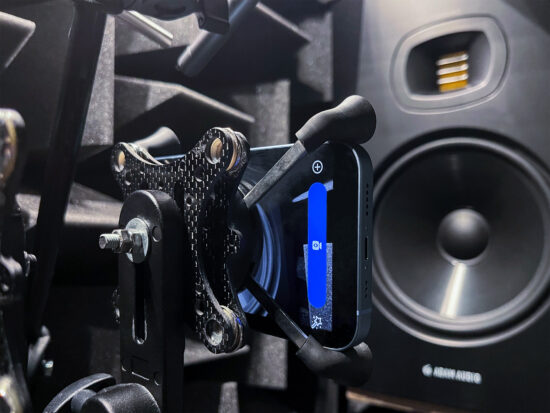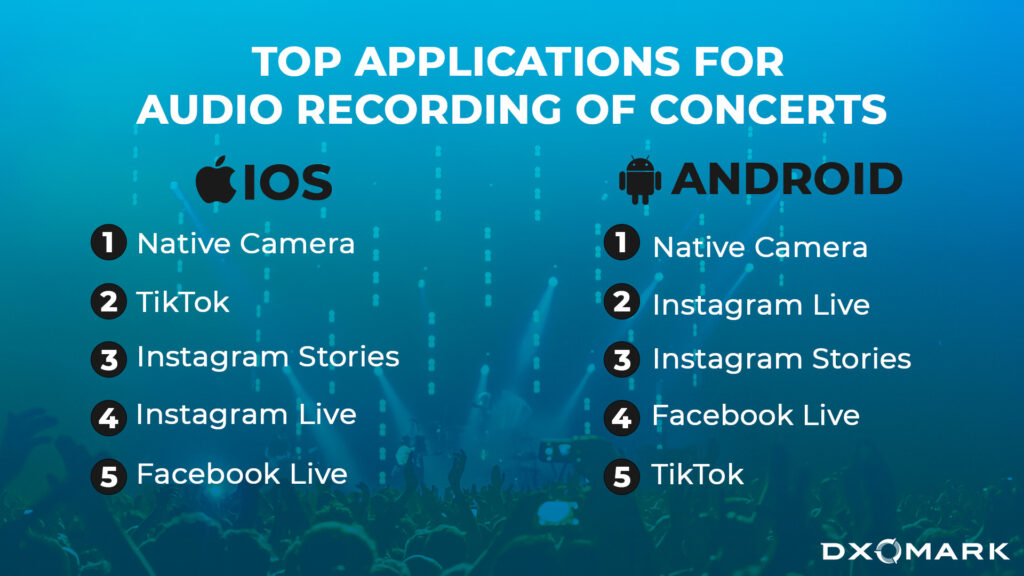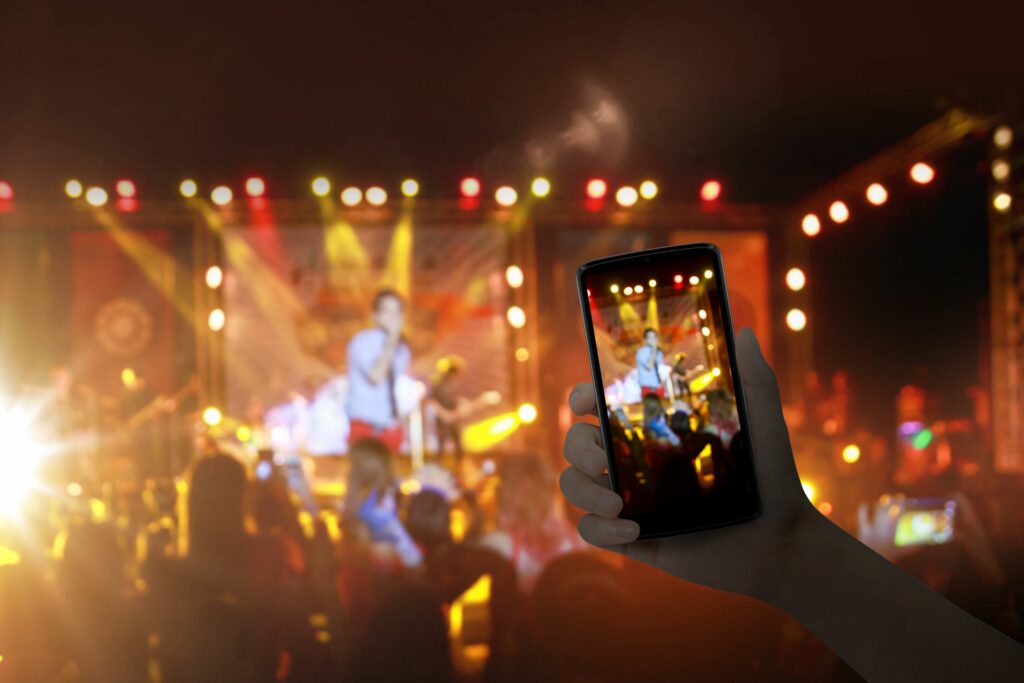The atmosphere in the darkened stadium starts to thicken with excitement as the crowd awaits the band to take the stage. Amid the chatter, the sounds of a guitar begin to fill the arena and suddenly hundreds of little lights pop up from the audience. These are not the flames of cigarette lighters from yesteryear, but rather the luminance from smartphone screens that are capturing the images and music from the concert.
It’s a common sight these days at concerts because smartphones easily let us capture these unique events and then share the images and sounds with others. In fact, it’s so common that DXOMARK’s audio protocol puts all smartphones through a loud concert use case, which consists of recording music with the main camera app at a high SPL (Sound Pressure Level). The test emulates the sometimes-extreme conditions of a real concert and helps DXOMARK’s engineers highlight the main qualities and flaws of a device in terms of timbre, dynamics and artifacts when recording videos with musical content.
Our audio protocol uses the main camera app to evaluate a concert recording, but we recently looked at the other ways that concertgoers immortalize or livestream their favorite shows— mainly through their favorite social media app directly.
Our goal was to assess how recording through a social media app, rather than through the main camera, would affect the audio quality of the concert. Different applications have their own audio processing (noise reduction, EQ, compression, normalization…), and therefore the recorded audio might sound differently from each other.
Our audio experts have put the most used social media apps to the test, and they have produced a comparative analysis, the results of which will be summed up in this article. Read on to find out how your favorite social app performed.

Test conditions
We selected four recent smartphones for this experiment: Apple iPhone 14, Google Pixel 7 Pro, Samsung Galaxy Z Fold4, and Xiaomi 12T.
We tested each device exactly as we do in our protocol’s concert use case, by activating recording in an anechoic box at high sound pressure level (115dB SPL), using music genres such as Electronic and Hip-Hop. Each device was tested using the following:
– Main camera application
– Facebook Live
– Instagram Live
– Instagram Stories
– TikTok
Like in our protocol, the concert use-case evaluation focused primarily on timbre, dynamics, and artifacts. (Read more about how we test audio here.) The main camera recordings served as a reference for comparison throughout the tests (as they are likely to be less processed).
Facebook Live
Interestingly enough, audio processing seemed to differ between the iOS and Android versions. On both ecosystems, the high-end of the spectrum is noticeably cut off above 12kHz because of a lower sampling rate. However, recordings made with the iPhone sounded particularly dark, in addition to being riddled with multiple resonances affecting both midrange and the remaining treble. These resonances had some undesirable results on the overall sonority.
The Android version provided much different results in terms of tonal balance, which seemed altered to a lesser extent. However, the recording’s gain is noticeably louder, inducing some heavy compression with most devices, as well as some distortion (especially in high-end).
Instagram Live
For both iOS and Android, recordings produced through Instagram Live were monophonic, and similarly had their spectrum cut off above 12kHz. Their gain was also much louder than the original, resulting once again in some excessive compression, and distortion in the upper spectrum. This time the processing seemed identical on both iOS and Android, and the induced artifacts seemed less severe than with Facebook Live.
Instagram Stories
Recordings produced as Instagram stories still had their spectrum cut off above 12kHz and sounded very similar to the ones made with Instagram Live, but a little harsher.
The iPhone 14 audio was monophonic, but it was quite a different story for Android. Although recordings on Android were stereophonic, the side channel appeared to be limited to a very narrow frequency band — between 2kHz and 10kHz– with gating applied below 5kHz, making it even more restricted. All in all, recordings had the bare minimum requirements to be considered stereophonic.
TikTok
Like Facebook Live, recordings produced with TikTok had noticeable differences in processing between the iOS and Android versions. All recordings were monophonic by default, with the usual cut above 12kHz, although the distortion of the upper spectrum seemed much more pronounced on the Android recordings, completely crushing the high-end.
Compression was also much more preponderant on these devices, and arguably worse than the Facebook Live recordings. On the iPhone 14, some compression and distortion were noticeable but less so than on Android. Timbre was the main issue: While it was less problematic than on Facebook Live, some unpleasant resonances impaired the sonority of the recordings.
Comparison between the tested apps
Here is a comparison of the recorded result for the Google Pixel 7 Pro :
And for the Apple iPhone 14 :
Conclusion
On all apps, the recordings’ sampling rate was reduced to improve bandwidth, which had an impact on sound quality that could be perceived by the attuned listener. While sampling rate was very low, it did not usually differ between the apps, and impacted mainly spectrum bandwidth. Much more noticeably, the extremely low bitrates that were induced by lossy audio compression resulted in a sound quality that was undeniably worse than the recordings produced through the main camera app. Dynamic range was very restricted, and harsh clipping was a common occurrence.

The default audio processing seemed different between Android and iOS for some apps, with Facebook and TikTok also introducing some questionable resonances in their iOS recordings. Regardless of your device, there is no audio option you can tweak. So, if you’re filming for a story or any related post, you are better off using your main camera app. However, if you want to live-stream directly, then the choice of app is ultimately yours.



DXOMARK encourages its readers to share comments on the articles. To read or post comments, Disqus cookies are required. Change your Cookies Preferences and read more about our Comment Policy.